-
California levees face risk of catastrophic failure as a result of historic drought
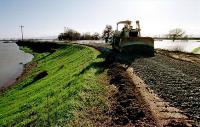
Earthen levees protect dry land from floods and function as water storage and management systems. Over 21,000 kilometers of earthen levees deliver approximately two-thirds of potable water to more than twenty-three million Californians and protect more than $47 billion worth of homes and businesses from flooding. Scientists say that the ongoing extreme drought in the state poses a risk of catastrophic failure to California’s levee systems and highlights an urgent need to invest in research regarding the vulnerabilities of these systems under extreme climatic events.
-
-
The lessons of Hurricanes Katrina and Rita
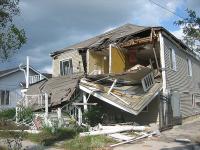
As the tenth anniversary of hurricanes Katrina (29 August) and Rita (23 September) approaches, memories of the storms vividly remain for Texans. Katrina killed more than 1,800 people and Rita forced the largest evacuation in Texas history, with more than three million people leaving the Houston-Galveston area. There are lessons to be learned from both, experts say.
-
-
Climate change and Hurricane Katrina: what have we learned?
Theory and computer models show that the incidence of the strongest hurricanes — those that come closest to achieving their potential intensity — will increase as the climate warms, and there is some indication that this is happening. Global warming, however, is occurring far too fast for effective human adaptation. Adapting to the myriad changes expected over the next 100 years is such a daunting prospect that otherwise intelligent people rebel against the idea even to the extent of denying the very existence of the risk. This recalcitrance, coupled with rising sea levels, subsiding land, and increased incidence of strong hurricanes, all but guarantees that New Orleans will have moved or have been abandoned by the next century.
-
-
Civil engineering graduate students awarded scholarships for water research

Three Texas A&M graduate engineering students were recently awarded scholarships to pursue water-related research. The first project will investigate and better define “green water,” which is generally perceived as the soil water available for plants to use, and its potential to alleviate the projected water shortage for Texas agriculture. The second project focuses on future water availability and allocations in the Rio Grande River. The third focuses on the joint effects of climate change, urbanization and flow regulation on water supply in a metropolitan area.
-
-
Hundreds of fires blazing across more than 1.1 million acres in the West
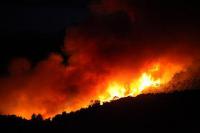
Wildfires have been ravaging large parcels of land in the West and there seems to be no end in sight for the weary Westerners. There are hundreds of individual fires blazing across at least 1.1 million acres in the West. Both the military and foreign firefighting crews have been called in to help the beleaguered firefighters in the West. Washington State’s firefighters are stretched to the limit, and on Friday the state’s Department of Natural Resources (DNR) opened centers in Omak and Colville to coordinate offers of help from trained, qualified volunteer firefighters and from people who have and can operate machinery like backhoes and bulldozers to dig fire lines.
-
-
July 2015 the hottest month on record since measurements began in 1880
Global warming continues unabated. The latest NOAA report notes that July 2015 was warmest month ever recorded for the globe – that is, the warmest month since 1880, when temperature measurements were taken in a systematic fashion for the first time. The July globally averaged land surface temperature was 1.73°F (0.96°C) above the twentieth century average. The year-to-date temperature combined across global land and ocean surfaces was 1.53°F (0.85°C) above the twentieth century average. This was the highest for January–July in the 1880–2015 record, surpassing the previous record set in 2010 by 0.16°F (0.09°C).
-
-
Drought causing California’s San Joaquin Valley land to sink, damaging infrastructure
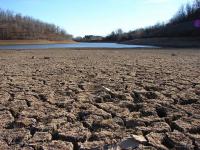
Californians continue pumping groundwater in response to the historic drought, and as a result, land in the San Joaquin Valley is sinking faster than ever before, nearly two inches per month in some locations. Sinking land, known as subsidence, has been occurring for decades in California because of excessive groundwater pumping during drought conditions, but the sinking is happening faster. The increased subsidence rates can damage local, state, and federal infrastructure, including aqueducts, bridges, roads, and flood control structures. Long-term subsidence has already destroyed thousands of public and private groundwater well casings in the San Joaquin Valley. Over time, subsidence can permanently reduce the underground aquifer’s water storage capacity.
-
-
Safe! Claims that an asteroid is threatening earth are unfounded: NASA
Numerous recent blogs and Web postings are claiming that an asteroid will impact Earth, sometime between 15 and 28 September 2015. On one of those dates, as rumors go, there will be an impact — “evidently” near Puerto Rico — causing wide-spread destruction to the Atlantic and Gulf coasts of the United States and Mexico, as well as Central and South America. NASA strongly rejects these unfounded rumors. “There is no scientific basis — not one shred of evidence — that an asteroid or any other celestial object will impact Earth on those dates,” said Paul Chodas, manager of NASA’s Near-Earth Object office.
-
-
Warming climate exacerbating California drought
A new study says that global warming has measurably worsened the ongoing California drought. Scientists largely agree that natural weather variations have caused a lack of rain, but an emerging consensus says that rising temperatures may be making things worse by driving moisture from plants and soil into the air. The new study is the first to estimate how much worse: as much as a quarter. The findings suggest that within a few decades, continually increasing temperatures and resulting moisture losses will push California into even more persistent aridity.
-
-
U.S. coastal flood risk on the rise ten years after Hurricane Katrina
A decade after Hurricane Katrina caused $41 billion in property and casualty insurance losses, the most expensive catastrophe ever experienced by the global insurance industry, rising sea levels are driving up expected economic and insurance losses from hurricane-driven storm surge in coastal cities across the United States. Rising sea levels contributing to increased risk of severe economic damage from flood following a hurricane – and Miami, New York, and Tampa now face greater risk than New Orleans.
-
-
World’s most at-risk coastal regions should adopt Louisiana’s post-Katrina protection plans
A decade after Hurricane Katrina hammered America’s Gulf Coast, measures are being taken there to protect against similar devastation from natural disasters — as well as against long-term, gradual impacts resulting from climate change. Other coastal regions across the world, however, remain vulnerable to damaging storms, and providing similar protection for the tens of millions of people living in those areas — around 38 percent of the global population, or 2.5 billion people, lives within 100 kilometers (62 miles) of the coast — will require international action. Experts say that the world’s most at-risk nations should implement coastal protection plans like those adopted by Louisiana.
-
-
Cascadia initiative gathers information on Northwest Pacific seismic risks
The Cascadia subduction zone (CSZ) is a 680-mile Pacific fault that runs roughly from Cape Mendocino, California in the south to northern Vancouver Island, British Columbia. Early data coming in from a massive, four-year deployment of seismometers onshore and offshore in the Pacific Northwest are giving scientists a clearer picture of the Cascadia subduction zone, a region with a past and potential future of devastating “megathrust” earthquakes.
-
-
New tools increase Palestinians’ capacity to face earthquakes
A massive earthquake would lead to the devastation of 70 percent of houses in the Palestinian territories, and the death of 16 000 people. As the Palestinian territories are located in the Rift Valley — right at the frontier between the Arabian and African plates which are moving farther apart — the likelihood of earthquakes is expected to keep increasing. Two projects aim to make the next generation of citizens and researchers better equipped to face this growing threat.
-
-
Geoengineering technique would not stop sea level rise

Researchers used computer model experiments to test how the Greenland Ice Sheet would react to albedo modification, also called solar radiation management geoengineering, a proposed technology to cool down the Earth’s temperature by reflecting some sunlight away from the planet. They found the ice sheet might contribute to sea-level rise for decades to centuries after albedo modification began. The researchers say that albedo modification should not be counted on as a short-term solution to stop rising global sea levels.
-
-
Up to 30 percent less precipitation in the Central Andes in future
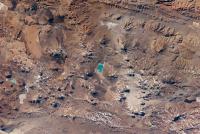
Seasonal water shortages already occur in the Central Andes of Peru and Bolivia. By the end of the century, precipitation could fall by up to 30 percent according to an international team of researchers. Researchers show that precipitation in the rainy season could drop noticeably - and this could happen within the next twenty years.
-
More headlines
The long view
Risk Assessment with Machine Learning
Researchers utilize geological survey data and machine learning algorithms for accurately predicting liquefaction risk in earthquake-prone areas.
